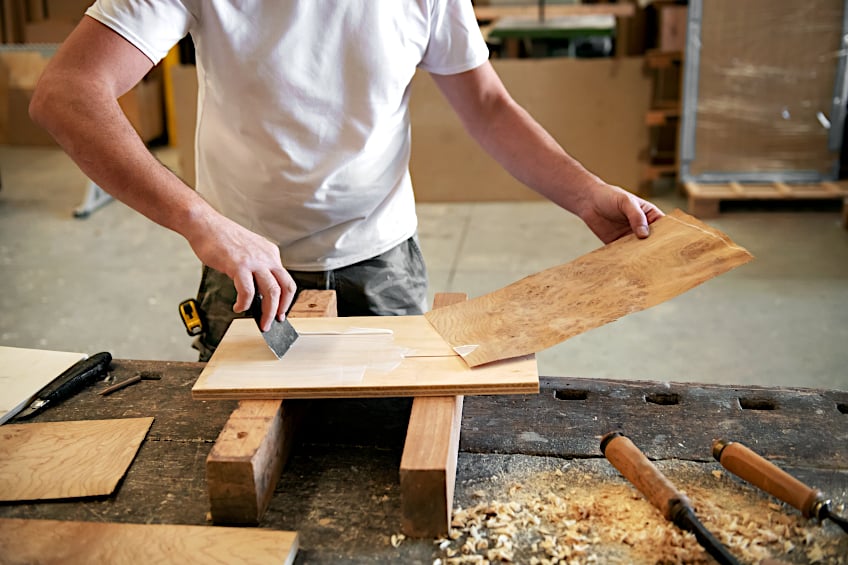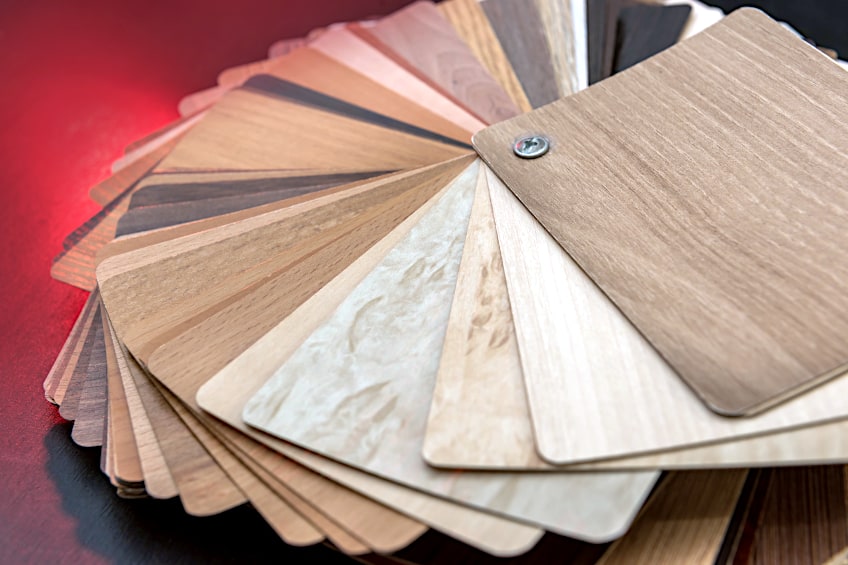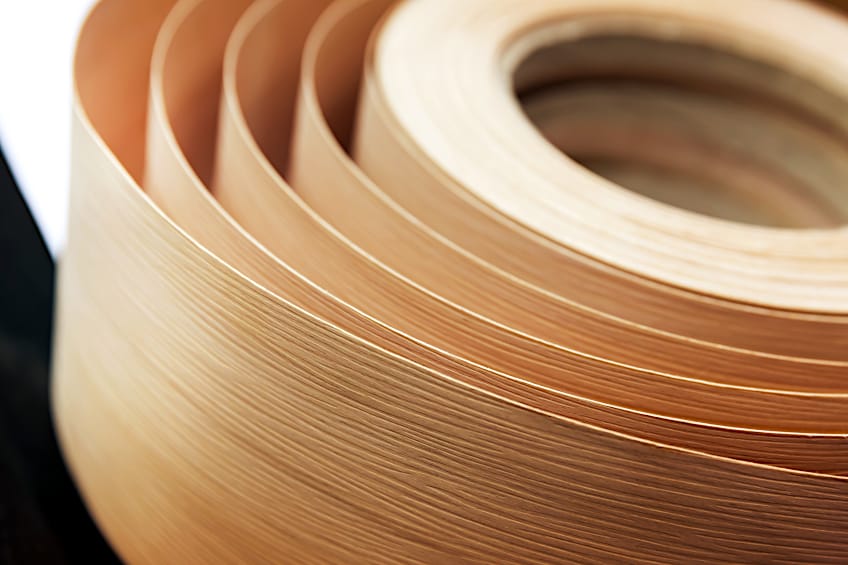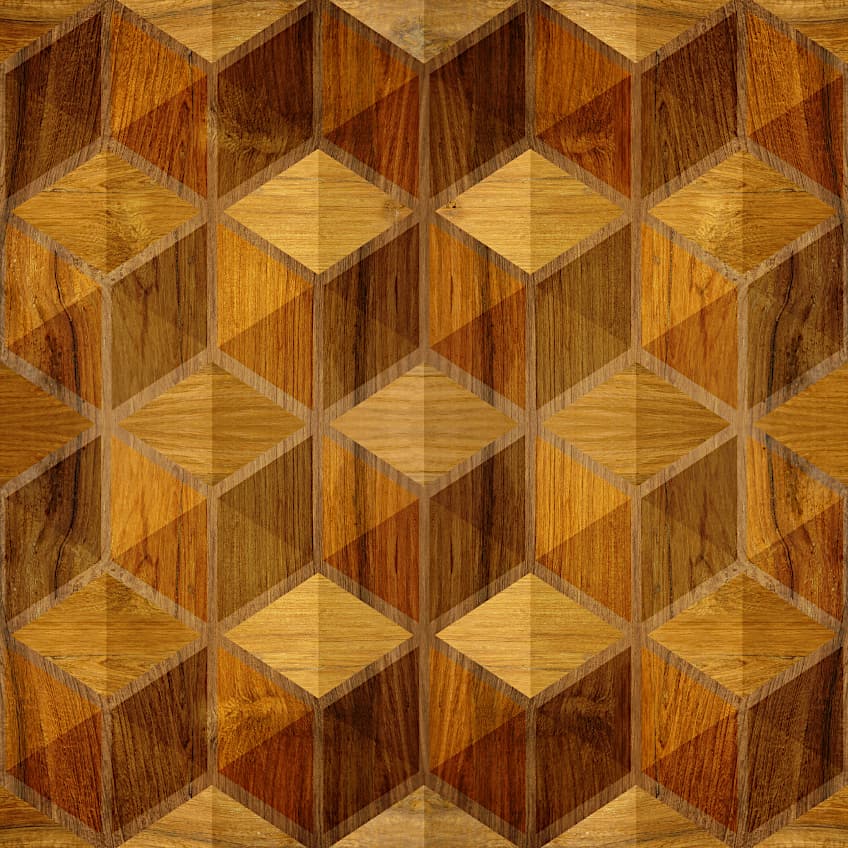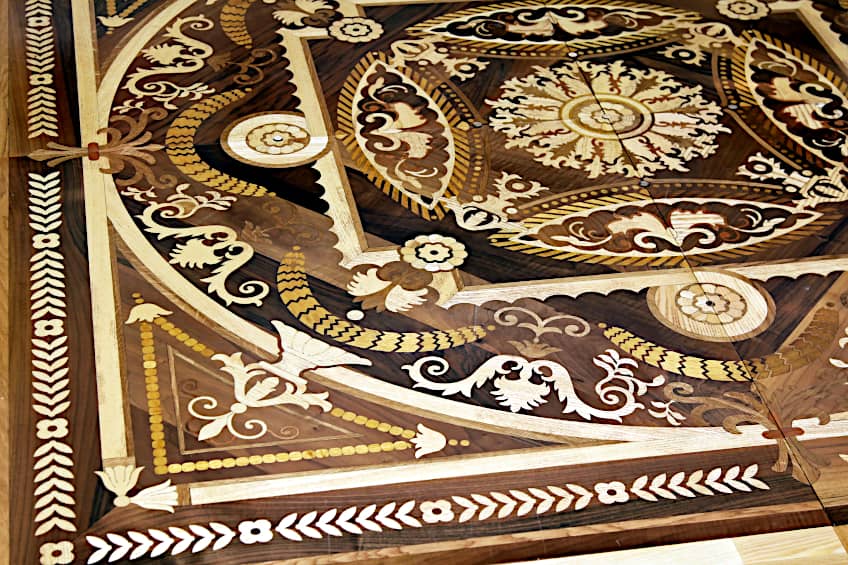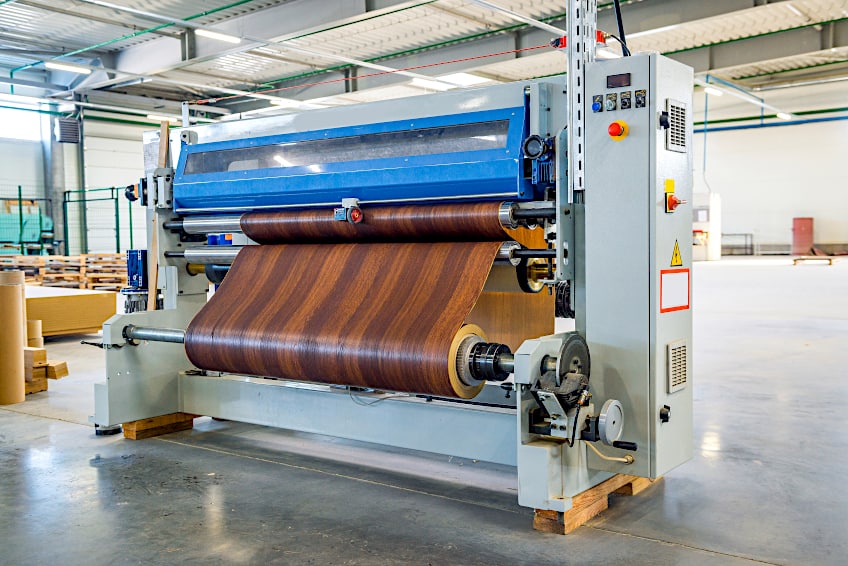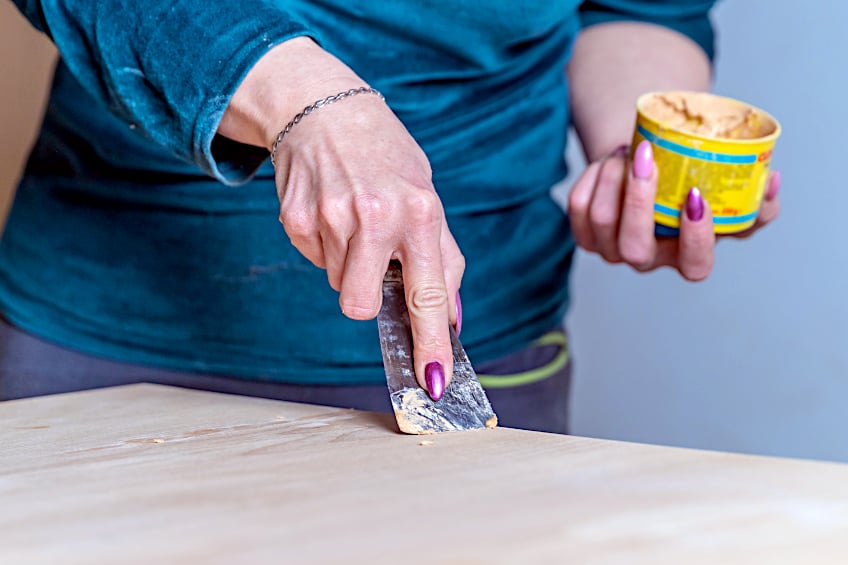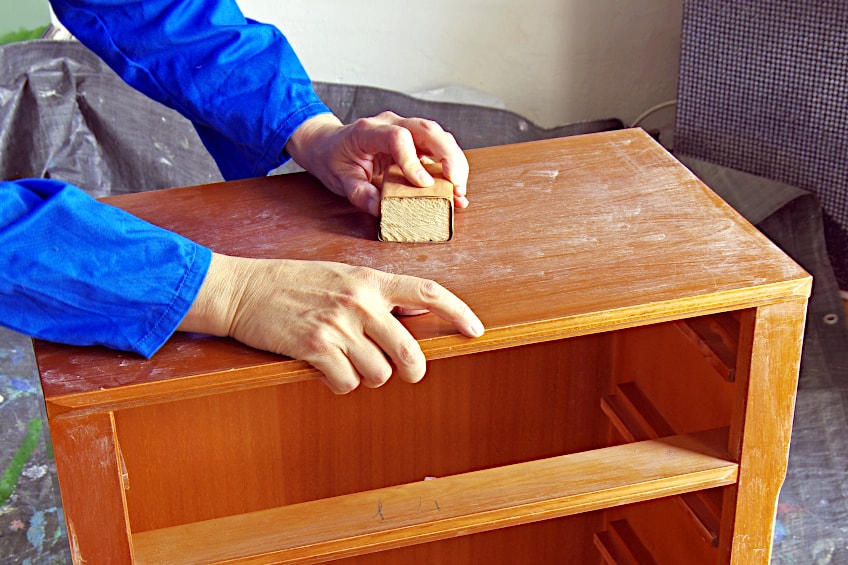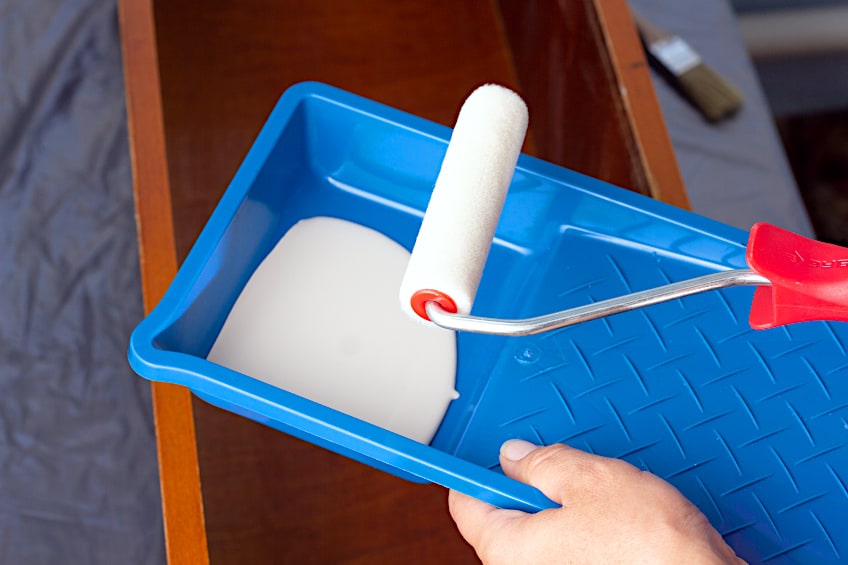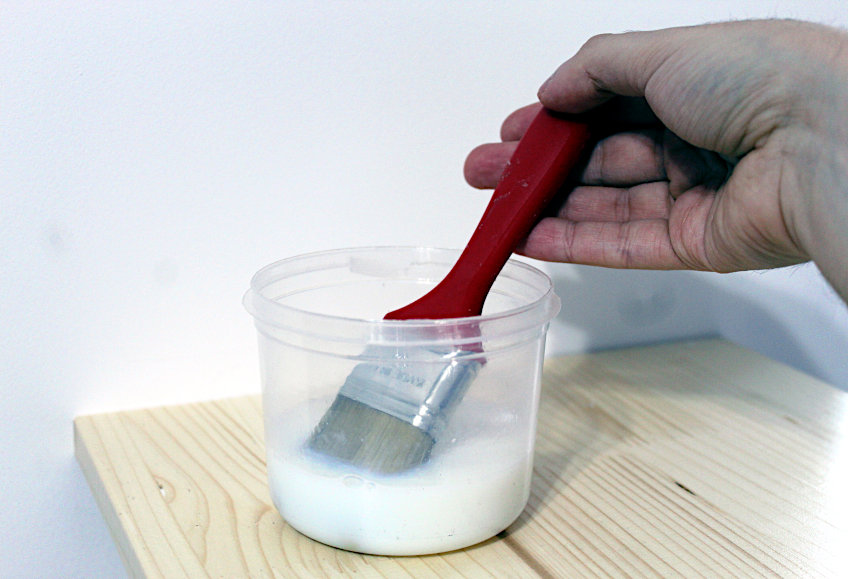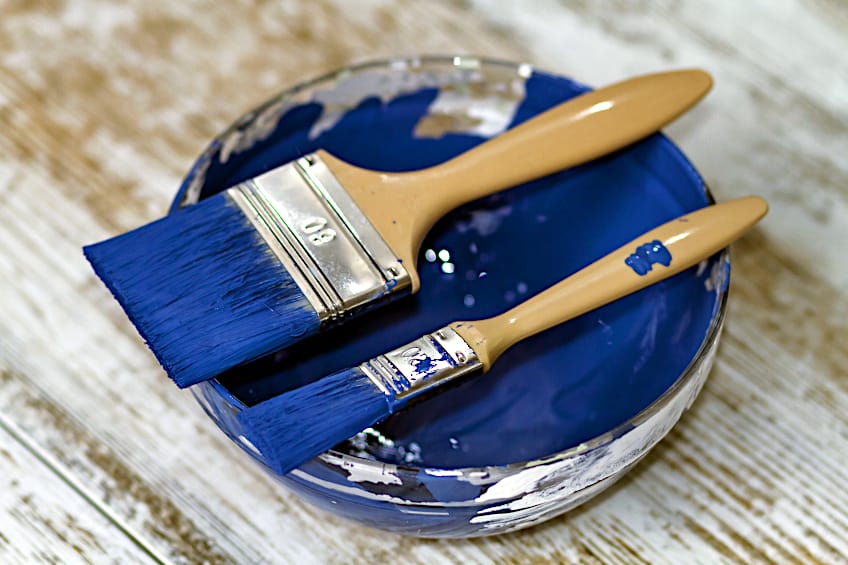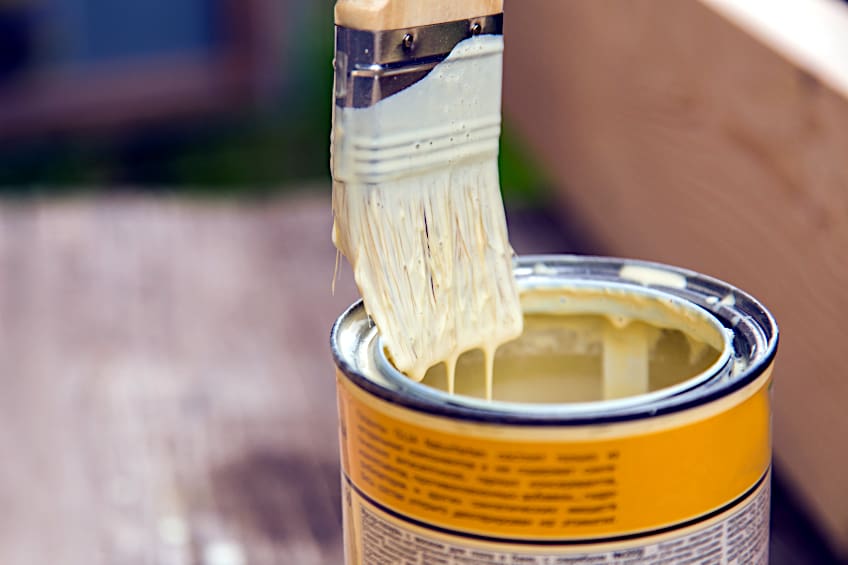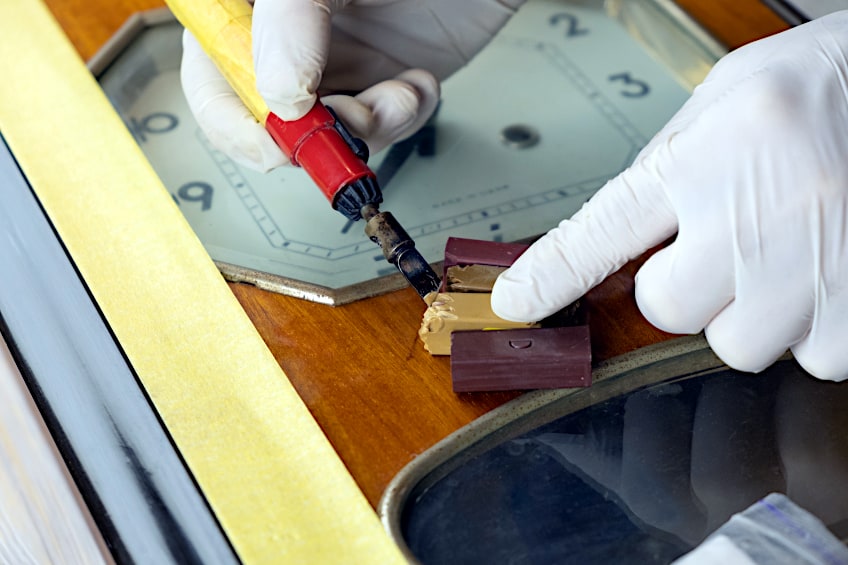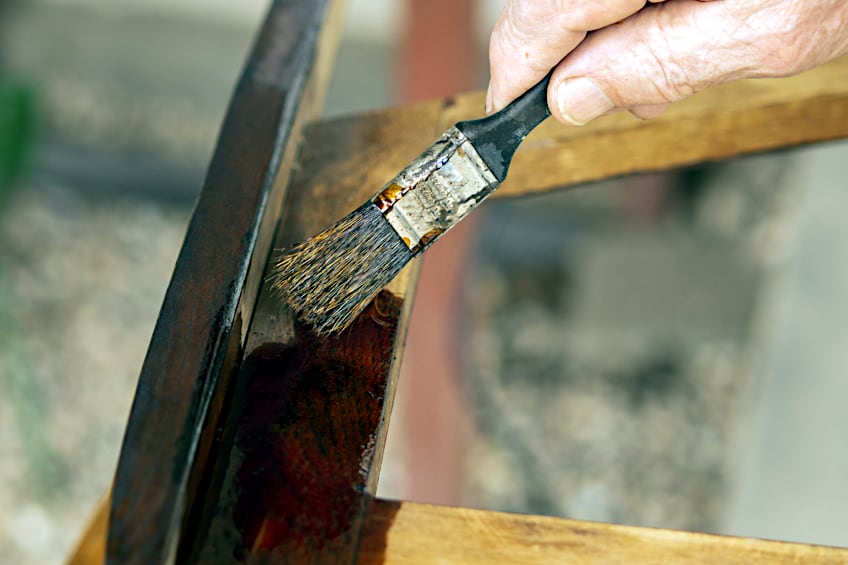How to Paint Veneer Furniture – Prep and Paint Application Guide
This post may contain affiliate links. We may earn a small commission from purchases made through them, at no additional cost to you. You help to support resin-expert.com
When learning how to paint veneer furniture, it is important to have a clear understanding of what it is. While veneer furniture used to be very popular, the overall design has become incredibly outdated. Instead of leaving a perfectly good chest of drawers or bookshelf at the local dump, we have found ways to revitalize your veneer furniture. To find out more, keep reading all about wood veneer below.
Table of Contents
What Is Wood Veneer?
Wood veneer is a group of thinly sliced wood glued onto the core panels of either medium-density fiberboard, particle board, or wood to produce flat panels. These are generally used to produce various parts of furniture, doors, and parquet floors, and they can be used in marquetry.
How Is Wood Veneer Made?
Wood veneer is a cheap wood product that can be procured by slicing or peeling timber to produce thin sheets of wood. The general appearance of the wood grain depends on a variety of factors such as the growth rings of the tree and the angle at which the wood was cut. Wood veneer is generally made with three types of commercial equipment. This includes a rotary lathe, a slicing machine, and a half-round lathe.
Based on the tree species, each slicing process produces a distinct type of wood grain. While this seems like the way it has always been done, in the past, veneers were made with a saw, which produced a lot of waste. These days, the process is fast and incredibly economical.
Different Types of Wood Veneer
Similar to other types of wood that are different in manufacturing methods, appearance, and physical characteristics, the same applies to veneer wood. Below are the different types of wood veneers that are used and everything you need to know about them.
Natural Veneer
This is the most popular type of wood veneer available and it is the most commonly used. Natural veneer consists of a thin sheet that had been taken from solid wood, either by planeing, chipping, peeling, or sawing. The reason why this is referred to as natural veneer is because it retains its natural texture throughout production.
Due to its structure, it has maintained an intermediate price point since it is more expensive than chipboard, yet cheaper than solid wood. What makes this one of the best veneer options is its unique pattern, sophistication, and general environmental friendliness. If you are concerned about the cost then look out for peeled veneer as this is the cheapest variation.
Fine-Line Veneer
Fine-line veneer is formed from softwood rotary sliced veneer by bonding veneer layers together and molding them into blocks, which is how veneers of various sizes, colors, as well as textures, are generated. Fine Line veneer is capable of emulating the grain pattern of any kind of wood while maintaining a consistent shade. It lacks the common array of flaws of knots, cavities, and knots.
Fine-line veneer tends to be more porous and fragile than typical natural veneer. Since it is made up of several hundred narrow veneer pieces that have been bonded together.
However, the options for replicating other species and the color spectrum associated with these veneers are virtually limitless. Fine-line veneer is not comparable to any of the current species of wood and has a distinct structure, pattern, and color that meets recent trends in slope and arched fabrication.
Rotary Cut Veneer
Rotary cut veneer is the most popular sort of veneer, and it is created from birch, pine, oak, and alder. It is inexpensive because it is made using thin “lust” technology that is taken around from the wood. This process is cost-effective since it enables you to extract the greatest quantity of wood appropriate for future use from a single log.
Sliced Wood Veneer
Opposed to peeled veneer, the sliced variation has a distinct texture created by varying the angles of the cutting process and the workpiece planes. Sliced veneer is made by machine-cutting strips of wood from a trunk to the width of the project. This allows for the creation of a uniform wood grain style, which is popular among enthusiasts of natural wood.
Shop-Sawn Veneer
Sawn veneer is utilized for a variety of inlays, frequently elevating the items to the level of a true work of art. Shop-Sawn veneer has existed around for over a century and is regarded as a true replica of art. This veneer is of exceptional quality and may be utilized in the manufacture of violin decks as well as other stringed instruments. This happens to be one of the most costly varieties of veneer due to the vast amount of wood used in its production.
Roll Veneer
Roll veneer consists of very thin planed pieces of high-grade wood spliced to the desired size with a proprietary technology that conceals the connections entirely. It is utilized as a long-lasting and versatile ornamental coating for objects with intricate features and furnishing edges.
Decorative Veneer
Decorative veneer is constructed of genuine wood and has been stained in various hues throughout the whole surface, keeping all of the key properties of wood. With this form of veneer, you may design furniture pieces in any color spectrum with a uniform texture and even mix various hues with the same design.
Multi-Layer Veneer
Multi-veneer is a sort of rebuilt veneer composed entirely of natural wood. This sort of veneer is the most “decorative” since its look is frequently the least representative of genuine wood patterns. Geometric designs, typically mixing several color tones, are the major color themes of multi-veneer.
Recent advances in technology have enabled the production of face materials with ever more distinct patterns. This veneer is manufactured from chips of wood and is made up of a multi-layer substance that is attached to a sturdy and elastic basis.
3D Veneer
3D Veneer is a 3D effect veneer that blends ultra-modern characteristics with natural wood texture. Exquisite volumetric designs with microscopic details are generated by combining a pair of thin veneer layers that adopt the shape of distinct patterns during the process of pressing. This allows you to play around with various styles as you generate new and unique designs.
Spliced Veneer
This sort of wood veneer is most commonly made in the shape of a burl of species of wood secured on a fleece-covered base from parts of root veneer, and this not only enables you to collect fresh and distinctive patterns, but also reduces inefficiency in the process of trimming suitable parts when working with individual sheets.
As you can see, there are different variations of wood veneer, each holding distinct properties that will allow you to complete different projects. Each one has different properties and you will undoubtedly find one that suits your budget and project requirements.
How to Tell If It Is Veneer
There are different ways to determine whether you are working with solid wood or wood veneer furniture. For starters, finding edge grain on either side is a good indicator that you are dealing with veneered furniture. This will also have edge banding, and while you are looking at the furniture, try lifting it. Wood veneer is much lighter than solid wood and if it is completely smooth, this will be a good indicator that it is veneered furniture.
Certain wood species will have distinct ridges or raising of the natural grain. When it comes to the grain itself, natural wood grain has knots, but no repeatable patterns, or symmetrical sides, while wood veneer often has patterns and it is symmetrical.
Wood Veneer vs. Laminate
If you want to know how to tell if furniture is laminate or veneer, the two are surprisingly easy to tell apart. Laminate is generally made of plastic or other types of material, with a coating that is designed to resemble wood. Wood veneer, as we have already established, is a thin piece of real wood that is pressed onto a piece of furniture.
One of the most common laminate surfaces consists of white melamine, but laminates are often manufactured to resemble real wood. This is done by printing a photographic image of wood grain onto the surface.
Painting Veneer Furniture
If you would like to learn how to paint veneer furniture then you are in luck, as we have provided all of the information you would need. Once you have finished this process, you will never need to ask, “Can you paint over veneer?” again. Giving your veneered furniture a fresh layer of paint will change the look entirely.
Keep in mind, as is the case with most DIY paint projects, preparation is key, and failing to do so will result in a poor finish.
Painting over wood veneer is a great project for anyone that is new to working with wood since it is very thin and it is significantly cheaper than solid wood. You will require the following items and tools to ensure that you get the best results:
- Wood glue
- Dish soap
- Clean cloths
- 80-grit sandpaper
- 220-grit sandpaper
- 120-grit sandpaper
- Bonding primer (one that matches your paint choice)
- Acrylic, oil-based, or enamel paint
- Paintbrushes
Repair All Damage to the Wood Veneer
Before you can apply your first coat of paint, you will need to take a look at the wood-veneered item and repair any damage or peeling. This can be done with wood glue, which is a great way to go forward if you do not know how to repair peeling veneer. Since wood veneer is extremely thin, it is prone to chipping and cracking. Once these issues are taken care of, it will be much easier to get the paint to adhere to the surface. However, this is merely the first step.
Ensure That the Surface Is Clean
Painting on a dirty surface is a bad idea as the paint simply will not stick to the surface. This is because residual grime, dust, and dirt will stick to the surface and ruin the paint job. Cleaning wood veneer is very easy, as all you will need is warm water and mild dish soap. One important thing to keep in mind is not to soak the wood veneer as this will cause irreparable damage to the structure.
Sand the Wood Veneer
Whether you are working with a veneer tabletop or a cabinet, you will need to sand the surface. This will ensure a smooth surface that will drastically improve the overall quality of your work. Start with 80-grit sandpaper, then move up to 120-grit sandpaper. For the best finish, use 220-grit sandpaper; however, be mindful not to apply too much pressure to avoid ending up with sanded-through veneer.
Throughout the sanding process, you should keep your workspace clean by using a tack cloth to clean up any dust.
Once you have completed the sanding process, use a vacuum to clean up the dust and then wipe down and clean the surface of the wood with a damp cloth. This is an important step to follow before painting veneer furniture, so take great care when doing this and apply even pressure as you do not want to end up with sanded-through veneer.
Apply a Coat of Primer
Applying primer is an important part of the process and this will ensure that you get the desired finish. Primer ensures that your paint application is smooth and adheres to the surface. To get the best results, use a clean paintbrush to apply a coat of primer to the surface. Once each coat has dried, sand the surface until smooth, wipe it down, and apply another coat. Primer requires 24 hours to fully dry, so use this time to consider your color choices.
Paint the Wood Veneer
Once the primer has cured, you will be able to apply a coat of paint. It is best to apply two coats over the wood veneer surface. If you are using a light color, it is best to use two or more coats of paint; however, darker colors will require a minimum of four.
Applying Varnish
Before you start applying varnish, it is best to ensure that the area you are working in is well-ventilated as the fumes are very strong. Varnish is a great option if you would like to place items on the surface or if you are planning to use the surface very often. Use a paintbrush to apply the varnish and then wait for 24 hours for it to cure.
The Different Types of Paint for Wood Veneer
When learning how to paint veneer furniture, it is very important to ensure that you use the correct paint type. Some paints have different adhesive properties as well as provide different benefits when it comes to the protection of the surface. Below you will find a list of the best paints for wood veneer.
| Type of Paint | Wood Veneer Adhesion |
| Enamel Paint | ✔ |
| Metalized Dye Paint | ✘ |
| Lead Paint | ✘ |
| Acrylic Paint | ✔ |
| Latex-Based Paint | ✘ |
| Chalk Paint | ✔ |
| Oil-Based Paint | ✔ |
Acrylic Paint
When it comes to painting most surfaces, acrylic paint is usually the go-to choice for many DIY enthusiasts. Not only is it widely available in virtually all hardware stores, but it also provides a similar finish when compared to oil-based paint. Acrylic paint works very well on wood veneer surfaces with much less volatile organic compounds (VOCs).
Enamel Paint
If you are after an incredible finish, enamel paint is a great option that can be used in the interior and exterior of most homes. Enamel paint is capable of air drying to provide a smooth finish that can be used on all types of furniture. Another benefit of using this type of paint is that it provides a thick coat of paint that will protect your veneer tabletop or furniture.
Oil-Based Paint
Oil-based paints are incredibly versatile as they can be used on most surfaces from metal to wood veneer. With a variety of vibrant colors available, they also provide an added layer of protection from moisture, heat, insects, abrasion, impact, mold, and rot. The caveat of using oil-based paint is that they can be quite expensive and they contain VOCs.
Chalk Paint
Chalk paint is the most popular choice for painting on wood veneer. These are commonly available in aerosol form which makes it very easy to apply to most surfaces. Chalk paint has a muted and dusty tone when fully cured and it is a great finish for all wood veneer furniture and surfaces.
How to Stain Wood Veneer
Staining wood furniture is a great way to enhance its appearance, but the question remains, “Can you stain veneer?”. The short answer is yes; however, there is a lot more that goes into it. Below we have provided all of the information that you would need when it comes to staining wood veneer; however, this will only work with real wood veneer. You will need the following products and tools:
- Wood glue
- Putty scraper
- Cloths
- Wipe on poly
- Stainable wood filler
- 150-grit sandpaper
- Oil-based stain
- Gel stain for repairs
- Furniture stripper
- Orbital sander (optional)
Repair the Furniture
Just like what you would with the painting process, your first step is to repair any damage to the furniture. This is a lot more common than with solid wood furniture as wood veneer is extremely thin. If you have missing pieces of wood veneer, your best option would be to find a matching piece, cut it to size, and apply it with wood glue. Another option is to fill the missing space with wood filler. This can be sanded when dry to create a smooth finish.
Remove the Finish
It is very important not to skip this step as the finish will prevent the stain from seeping into the wood. Use furniture stripper to get rid of the finish, and if it is very thick, apply a second coat of stripper. Then use sandpaper to lightly sand with the direction of the grain to get rid of any scratches that have been made with the putty scraper.
Applying the Wood Stain
Applying stain is much easier than learning how to paint veneer furniture and the same rules apply to any type of wood. Apply the oil-based stain with a cloth moving with the grain of the wooden surface. Once the stain has been applied, wait a few minutes, and then remove the excess with a clean cloth. If wood filler was used, you will need to use gel stain to color-match the repaired section.
Sealing the Wood Stain
Once you have completed all of the aforementioned steps, you can proceed with the sealing process. Apply a sealer with a lint-free cloth by pouring the stain onto the rag and then wiping it with the grain. This should provide the perfect finish that will last for a very long time. If you feel that you could have done a better job, you could always restart the project.
Wood veneer has come a long way since the 1960s, and it is a great way to add some life to old furniture that you are not ready to let go of just yet. While most people do not know how to tell if furniture is laminate or veneer, you now do, and you can use this information to put together wonderful wood projects at a fraction of the cost of solid wood. Whatever your next wood veneer project might be, we wish you the best of luck!
Frequently Asked Questions
Can You Paint Over Wood Veneer?
Yes, you can. The process is straightforward and as long as you conduct proper preparation, you can easily paint over wood veneer. The same applies to staining, in case you wanted to know if you can stain veneer.
What Is Wood Veneer?
Veneer is an inexpensive sheet of wood that can be used as a fresh skin that is glued to various core panels of different wooden structures and furniture. This can be used all around the home and is an inexpensive way to completely overhaul the appearance of furniture.
How Can I Repair Peeling Wood Veneer?
If you would like to learn how to repair peeling veneer, the process is very simple. All you need to do is use wood glue to stick the loose piece back onto the furniture. The process can be completed in a matter of minutes, as long as you are careful not to use too much glue.


